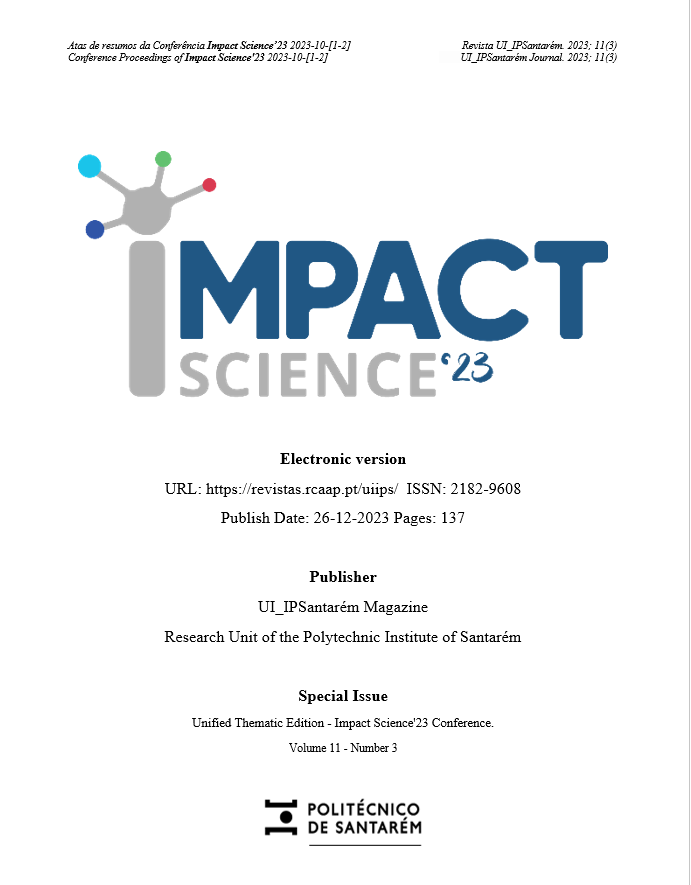Effect of cultural precedent on a cover culture
DOI:
https://doi.org/10.25746/ruiips.v11.i3.32526Keywords:
Cover crop, Cultural precedent, Dry matter, Intercropping, Nutrient restitutionAbstract
Cover crops (CC), installed between two main crops (CP), contribute to the sustainability of agricultural activity. They mitigate the leaching of nutrients, namely nitrogen in the form of nitrate, stimulate the soil microbiome, protect the soil from erosion, contribute to the control of certain weeds, and can produce forage material for animal feed; they are sinks of greenhouse gases (GHG). In Portugal, several works have been carried out to assess the impact of CC on the main crop (PC); however, CP assessment work in CC is practically non-existent, especially in a situation of cultural rotation. This work aimed to quantify the impact of 4 crops (corn, industrial tomatoes, butternuts, black-eyed peas ) in a CC, intercropping of grasses and legumes. In 2023, an experimental field was installed at the Escola Superior Agrária de Santarém (ESAS). At 139 days after sowing (DAS), 3 samples were taken from each of the four leaves of the rotation and the distribution of dry matter (DM) of three groups of plants (clovers, ryegrass, and other plants) of the intercrop was evaluated. The total production of dry matter in each of the leaves was also determined, at 146 DAS, the content of N, P, K, Ca, and Mg in DM was determined and the returns to the soil of these nutrients in organic form were estimated. Cultural precedent influenced the percentage distribution of DM across the 3 plant groups. There was a distribution of 60% of DM in the group of other plants in F1 (Black-eyed peas) and F3 (Industrial tomato), while clovers represented around 54% in F2 (“butternuts”) and 52% in F3 (Corn). Total DM production was slightly higher in F3 (5043kg/ha) followed by F2 (4833kg/ha) and F1 (4755kg/ha) and finally F4 (4462kg/ha). However, the differences were not statistically significant (p>0.05). It was estimated that CC returns, on average, in organic form and considering only the aerial part, 77 to 93 kg/ha of N; 11 to 13kg/ha of P; 101 to 141kg/ha of K; 20 to 28kg/ha of Ca and 11 to 13kg/ha of Mg.
Downloads
Published
How to Cite
Issue
Section
License
Copyright (c) 2023 Artur José Guerra Amaral, Mama Baldé, Tiago Reis, Ângela Prazeres

This work is licensed under a Creative Commons Attribution-NonCommercial-NoDerivatives 4.0 International License.
Authors publishing in this journal agree to the following terms:
Authors retain copyright and grant the journal the right of first publication, with the article simultaneously licensed under the Creative Commons Attribution License that allows sharing of the work with acknowledgement of authorship and initial publication in this journal.
Authors are permitted to enter into additional contracts separately for non-exclusive distribution of the version of the article published in this journal (e.g., publish in an institutional repository or as a book chapter), with acknowledgment of authorship and initial publication in this journal.
Authors have permission and are encouraged to publish and distribute their work online (e.g., in institutional repositories or on their personal webpage) at any point before or during the editorial process, as this may generate productive changes, as well as increase the impact and citation of the published work.



